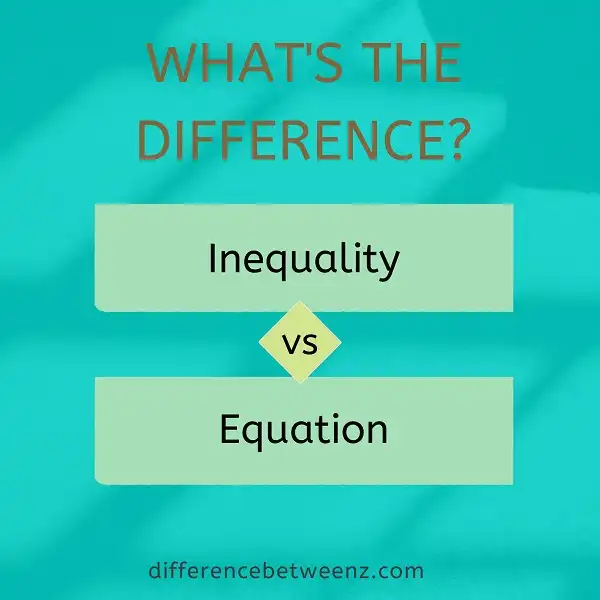Mathematics can be a difficult subject for students to understand, but it is important that they do. One of the most important things students need to learn in mathematics is the difference between equations and inequalities. Equations are mathematical statements that are always true, while inequalities are conditions that must be satisfied in order for a statement to be true. In this blog post, we will discuss the different types of equations and inequalities and provide examples of each.
What is Inequality?
In mathematics, an inequality is a statement that two values are not equal. It can be represented using the symbols < and >, which mean “is less than” and “is greater than”, respectively. Inequalities can be used to describe a range of values, such as “x is greater than 0 but less than 10”. In addition, inequalities can be chained together to create more complex statements, such as “x is greater than 0 and less than 10 or y is greater than 5 and less than 20”. Inequalities are a powerful tool for solving problems in mathematics and can be used to find unknown values in a given equation.
What is an Equation?
In mathematics, an equation is a statement that asserts the equality of two expressions. The most common form of an equation is two expressions separated by an equal sign, but there are also other forms that are sometimes used, such as when an expression is placed on either side of an inequality sign. Equations are typically used to solve for unknown values, though they can also be used to describe relationships between known quantities.
In order to solve an equation, one typically uses algebraic methods to isolate the variable of interest on one side of the equal sign. Once this is done, the variable can be replaced with its numerical value and the equation can be evaluated to find the value of the other variable. Equations can be used to describe a wide variety of relationships between mathematical quantities, making them a powerful tool in both mathematics and science.
Difference between Inequalities and Equations
In mathematics, an inequality is a relation that holds between two values when they are different (e.g., a < b). An equation is a precise statement of equality between two values (e.g., a = b). Inequalities can be used to describe relationships between variables that are not constant, whereas equations are always true for specific values of the variables. For example, the equation x + 2 = 5 is only true when x is equal to 3. However, the inequality x + 2 < 5 is true for all values of x that are less than 3.
In general, equations are easier to solve than inequalities because there is only one possible solution. In contrast, there may be many solutions to inequality or no solution at all.As another example, consider the equation x2 + 1 = 0. This equation has two solutions: x = -1 and x = 1. In contrast, the inequality x2 + 1 < 0 has no solution because there is no real number that satisfies the inequality (i.e., there is no value of x for which x2 + 1 is less than 0). In summary, equations and inequalities are both mathematical statements that describe relationships between values.
Conclusion
Inequalities and equations are two different ways of looking at relationships between numbers. An equation is a statement that two things are equal, while inequality is a statement that one thing is greater than or less than another. Equations can be solved to find out what the values of the variables are, while inequalities cannot. It’s important to understand the difference between these two concepts in order to solve problems correctly.


